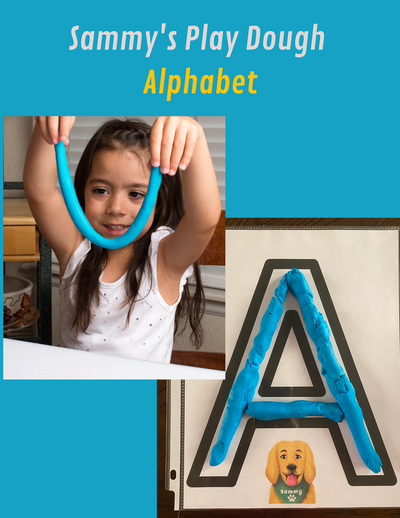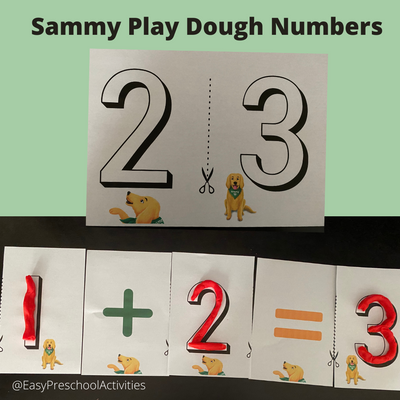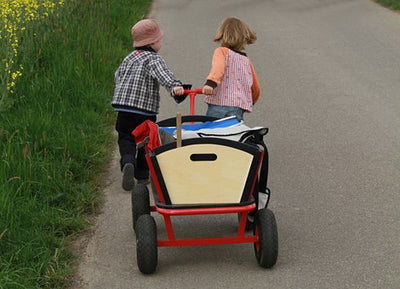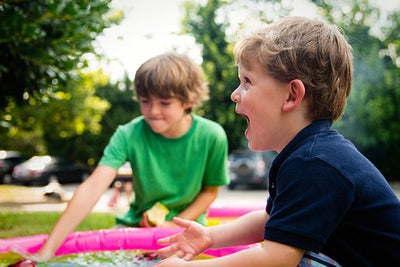Part 5: The Fourth Stage of Play
By Jeana Kinne, MA and Leia Knight M.Ed
Cooperative Play: 4 - 6+ years
Cooperative play is when you really start to see kids playing together. In cooperative play there's sharing, trading, negotiating, and some kind of organized game. You'll often see children's organized games when they play pretend. Playing pretend is actually a pretty advanced play skill because there's a distinct play scenario with assigned roles and rules.
Playing Pretend
To play pretend, children first create a play scenario by deciding what to play and then by identifying and assigning character roles. You'll notice your child doing this when they say things like "Let's play house. I'll be the mommy and you be the daddy" or "Let's say that you're the Big Bad Wolf and I'm a Little Pig."
Encourage your child to engage in cooperative play by encouraging them to play with peers and periodically giving suggestions of play scenarios. Some tried-and-tested play scenarios are going to the doctor, house, school, and taking a pet to the vet.

Create an area for pretend play in your home:
This play area allows children to understand and experience the adult world through imitation and creativity. The pretend play area provides a safe space for young children to create stories, practice new vocabulary and practice social skills. It is also a space where groups of children engage in pretend play, providing opportunities to learn self-help skills, sharing space and materials, take turns and the use abstract thinking. With some creativity and some objects laying around the home, a variety of play experiences can be facilitated by YOU! Here is an idea of how to encourage a pretend play “camping trip”!
Place the following ‘props’ to include in one are of your home:
- Small Pop-up tent
- Sleeping Bag
- Blanket
- Duffel bag/suitcase
- Fishing Hat
- Sunglasses
- Backpack
- Binoculars
- Plastic fish
- Plastic cooking materials
- Empty bucket
- Small tree limbs/sticks for firewood
- Blow up raft or inner tube w/ Long sticks (for fishing)

Take about Cause & Effect and Emotions
While you're encouraging your child to play with peers and providing opportunities for your child to practice interacting, there are other simple things you can do within your daily routine to help your child develop crucial social skills. I could literally go on forever about social skills (for real, it's my favorite research obsession) but we'll boil it down to just one crucial foundational skills for today: Theory of Mind.

Theory of Mind is essentially 'social cognition.' You could also say that it's pretty much being in tune with others' emotions and perspectives and knowing how this plays into the cause and effects of others ‘behavior’. If you have Theory of Mind, then you know that not everyone thinks like you do and knows all of the information that you know.
Theory of Mind is a big factor in peer acceptance and having positive social interactions.
To help your child develop Theory of Mind, here's a really simple strategy you can use when you watch Pixar Shorts:
When you watch them, label emotions, talk about interactions between individuals, and identify and explain the causes of emotions and behaviors. While you’re watching the films, periodically pause them and talk about what’s happening. Ask your child questions about what they’re seeing and why they think certain things are happening.
How does your child know what other children are feeling and why? Here are two activities that you can complete with your child to “practice” understanding other’s emotions:
Activity #1: Identifying Faces

Materials Needed
- One (1) Mirror
Instructions:
Step 1: The adult should have the child look in a mirror.
Step 2: The adult should say one word from the list below. When the adult says a word, have the child make that “feeling” face and look in the mirror.
Step 3: The adult should look at the child and make a face that matches the same feeling. Repeat until all “feelings” have been demonstrated.
List of Feelings
- Happy
- Sad
- Mad
- Scared
- Excited
- Grumpy
- Tired
- Energetic
- Bored
- Frustrated
- Relaxed
Activity #2: Feeling Face Freeze

Materials Needed
- One (1) Large area where the child can run safely
- One (1) Red Piece of Paper
- One (1) Green Piece of Paper
Instructions:
Step 1: Tell the child that this is a running game.
Step 2: Tell the child that when the adult holds up the green piece of paper, the child can move around by either running, jumping or rolling.
Step 3: Tell the child that when they hold up the red piece of paper, the child should “Freeze” and make an “Emotion Face” (happy, sad, scared, upset, angry, excited, etc).
Step 4: When the child makes the “Emotion Face”, the adult should guess what “emotion” the child is displaying. Once the adult guesses the right emotion, the adult can hold up the green piece of paper and allow the child to start moving again.
Step 5: Repeat Step 2 through Step 4 at least 10 times.
Step 6: Repeat the game, switching roles having the adult run and child hold up the paper.
Putting It All Together
Congratulations! You have made it to the end of the series and probably feel a bit overloaded with all of this information about language, social and play skills. Just remember that you don't have to become an expert on this overnight, start applying your new knowledge by picking one thing that you can do today to help your child develop their play skills. Focus on that one thing and then when it starts to become easy and second-nature for you, add on another. You've got this :)
**If you have questions or concerns about your child's language or social development, speak to your pediatrician.
Next Steps:
Teach your child social and academic skills at home! (For Ages 2 years old through 6).

- Learning Activities based on current National Preschool and Kindergarten Standards.
- Play based and fun for the whole family.
- Uses items you already have at home.
- Available on Amazon Prime and Amazon Smile
About the Authors:
 Jeana Kinne is an Early Childhood Developmental Specialist with a Masters in Education. She currently works with infants and toddlers with special needs and blogs at www.jdeducational.com where she shares tips and tricks regarding child development and answers to commonly asked parenting questions. Jeana created simple and engaging learning activities you can do at home with your children, using items you already have at home. You can find these activities at www.jdeducational.com/collections and follow her on Facebook at JDEducational: Preschool & Kindergarten Readiness.
Jeana Kinne is an Early Childhood Developmental Specialist with a Masters in Education. She currently works with infants and toddlers with special needs and blogs at www.jdeducational.com where she shares tips and tricks regarding child development and answers to commonly asked parenting questions. Jeana created simple and engaging learning activities you can do at home with your children, using items you already have at home. You can find these activities at www.jdeducational.com/collections and follow her on Facebook at JDEducational: Preschool & Kindergarten Readiness.
 Leia Knight is Deaf Educator specialized in Listening and Spoken Language. She developed Language for the Playground to answer the WHY and HOW questions. Why children need social and language skills, why certain skills are important, how to teach these skills, and how these skills affect a child’s functioning in the real-world. Leia discusses strategies, tips and research to answer all your language, listening and social skills questions at languagefortheplayground.com.
Leia Knight is Deaf Educator specialized in Listening and Spoken Language. She developed Language for the Playground to answer the WHY and HOW questions. Why children need social and language skills, why certain skills are important, how to teach these skills, and how these skills affect a child’s functioning in the real-world. Leia discusses strategies, tips and research to answer all your language, listening and social skills questions at languagefortheplayground.com.
Citations
Brown, P., Remine, M., Prescott, S. & Rickards, F. (2000). Social interactions of preschoolers with and without impaired hearing in integrated kindergarten. Journal of Early Intervention, 23: 3, 200-211.
Fung, W. & Cheng, R.W. Early Childhood Educ J (2017) 45: 35. doi:10.1007/s10643-015-0760-z
Parten, M.B. (1933) Social play among preschool children. Journal of Abnormal and Social Psychology, 28, 136-147.






